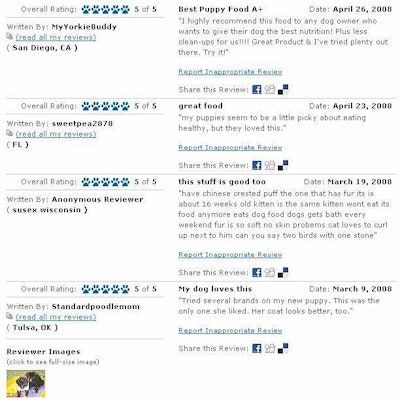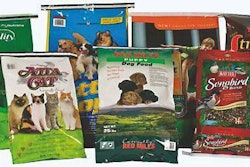
Consider this scenario: A consumer just adopted a dog and needs to find food. She heard it is important to start her puppy off right. But, right according to whom?
She is faced with the largest assortment ever of petfood brands. (I use "she" because most petfood buyers are women.) It's overwhelming and difficult to make comparisons. And I have news for you: The educated consumer is just as confused.
We're not just selling petfood. We're in the relationship business with pet parents. So explaining what retailers want from the petfood industry starts with what the customer wants and needs from us.
Trust is the bottom line
We know our customer:
- Is willing to pay for quality products that deliver results;
- Is asking questions and reading labels. Ingredients matter to her now more than ever;
- Remains concerned about product safety and relies on company reputations. It is critical to earn and maintain her trust.
Our customer is very resourceful and gathers information from a variety of sources. Certainly her experience at the retail level plays a major part, as does what your product label communicates. She may also be influenced by vets, breeders and shelters, but more than ever, the word of friends, family and complete strangers are influencing her opinion of us all. You may know these strangers she trustsyes, it's the millions of invisible faces on the Internet.
While today's petfood consumer seeks information from individual brand and retailer websites, our research shows she is leery of what your company says on its site and places more weight on what she reads online in independent views, blogs, message boards and customer reviews. The fact is, pet parents trust other pet parents; 70% of customers surveyed said that when it comes to petfood, they believe their peers more than an authority.
6 wants, 5 needs
As a retailer, I want your website to tell your story and tell the customer what she needs to know. To sell more of your products, I also want you to:
1. Know your target consumer and how she perceives your brand;
2. Effectively communicate your brand position and role;
3. Know your competition-what is your point of difference? How does your cost per pound compare? Use syndicated data for trends and talk to store associates;
4. Decide how to explain your formula-ingredients and message matter;
5. Have a distinct marketing strategy-a comprehensive, well-funded, well-developed plan (in the absence of information, retailers will make it up!);
6. Plan collaboratively-partner with retailers to customize tactics. Understand differences in your retail customer base.
I also need your help in these five key areas:
1. Industry standardization on the basics;
2. Meaningful advances in petfood technology;
3. Partnering to educate our customers;
4. Collaboration to drive out unnecessary costs;
5. Going green together.
Standardize the basics
To help you better sell your products, we retailers are seeking industry standardization on:
- UPC code placement on bags (picture a slightly built sales associate having to lift, turn over and rotate a 40-pound bag of dog food to find the UPC);
- Human-readable date codes with standardized formatting as well as placement;
- Narrow case packs for canned food-look to the soft drink industry for ideas;
- Association of American Feed Control Officials ingredient definitions-especially for by-products, by-product meals and meals. We understand you have only so much influence on this process as a petfood manufacturer, but a united industry might be able to accomplish changes.
Advance technology
History shows that innovation drives growth. Consumers embrace new technology when it offers obvious benefits, solves a problem or meets a need. Examples to date include formulations to reduce hairballs in cats or allergic responses in pets, plus products developed specifically for large or small dogs, certain breeds, indoor cats or pets with sensitive skin or stomachs.
Each of these innovations contributed to the revitalization of the premium petfood category. To continue to grow, our industry must have meaningful new advances in petfood technology. As the saying goes, innovate or die.
Educate our customers
The shift of consumer preferences toward natural petfoods is part of an evolution that started with premium and superpremium products and was influenced by lifestyle choices and the belief that natural and organic foods are safer. But I believe the shift also happened because these simpler formulations translate into a straightforward and easily understood message and ingredient deck. This has lessons we can apply to educating customers about petfoods:
- Use honest ingredients and formulas;
- Make clear product claims;
- Avoid misleading terminology;
- Partner with retailers on training materials;
- Hire only ethical in-store demonstrators; and
- Do not resort to negative selling vs. other brands.
Let me be clear: Negative selling techniques are not only bad for business but also undermine the entire superpremium petfood industry. Customers get confused by the contradictory statements and are not sure whom to believe.
Drive out unnecessary costs
The pet retail and petfood industries should partner to reduce costs in areas such as assortment productivity, demand management, supply chain management, distribution and commodities and raw ingredients.
Let's go green together
Our customers have come to expect us to be environmentally conscious. While it may not drive the initial purchase decision, it reinforces the customer's choice and endears loyalty to your brand. The actions are to reduce, reuse, recycle, review packaging and carton use and follow sustainable practices in our plants, distribution chains and corporations.
You'll find another succinct list of our needs in "12 things retailers need from you". We're committed to the petfood industry, so please read these in the spirit of our wanting to help you continue to thrive.



(1).png?auto=format%2Ccompress&fit=crop&h=167&q=70&w=250)

(1).png?auto=format%2Ccompress&fit=crop&h=167&q=70&w=250)










